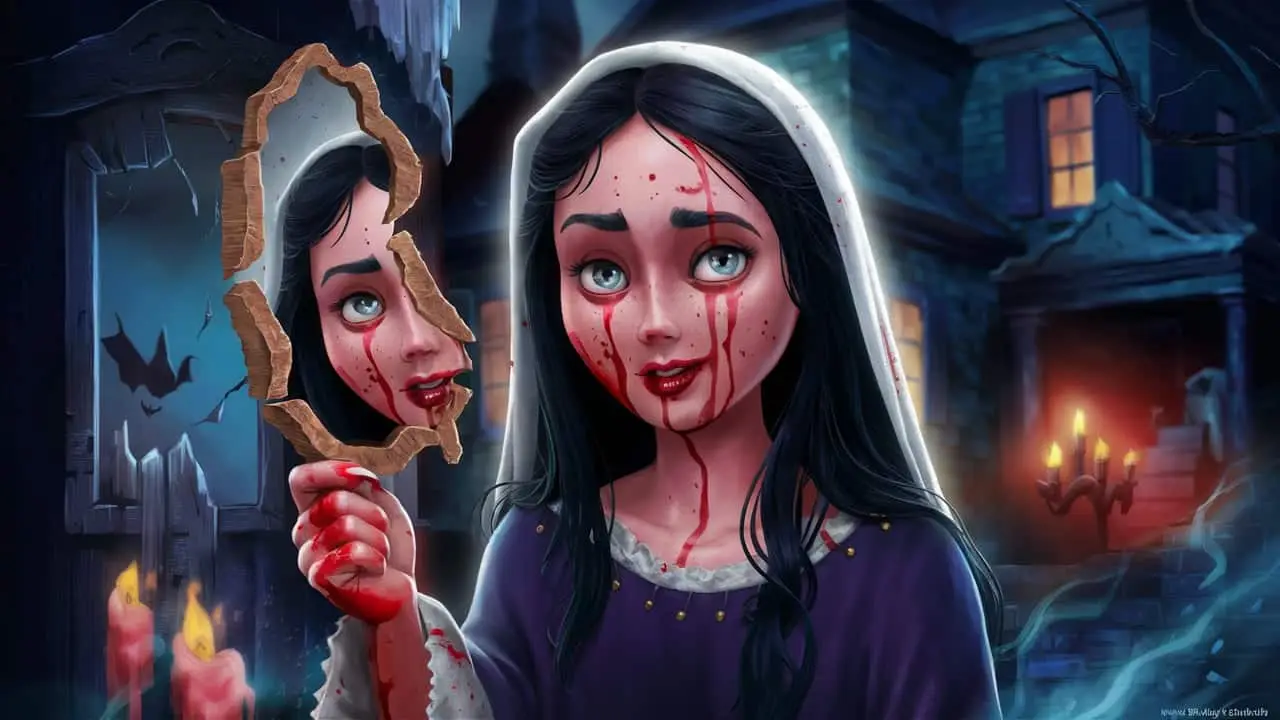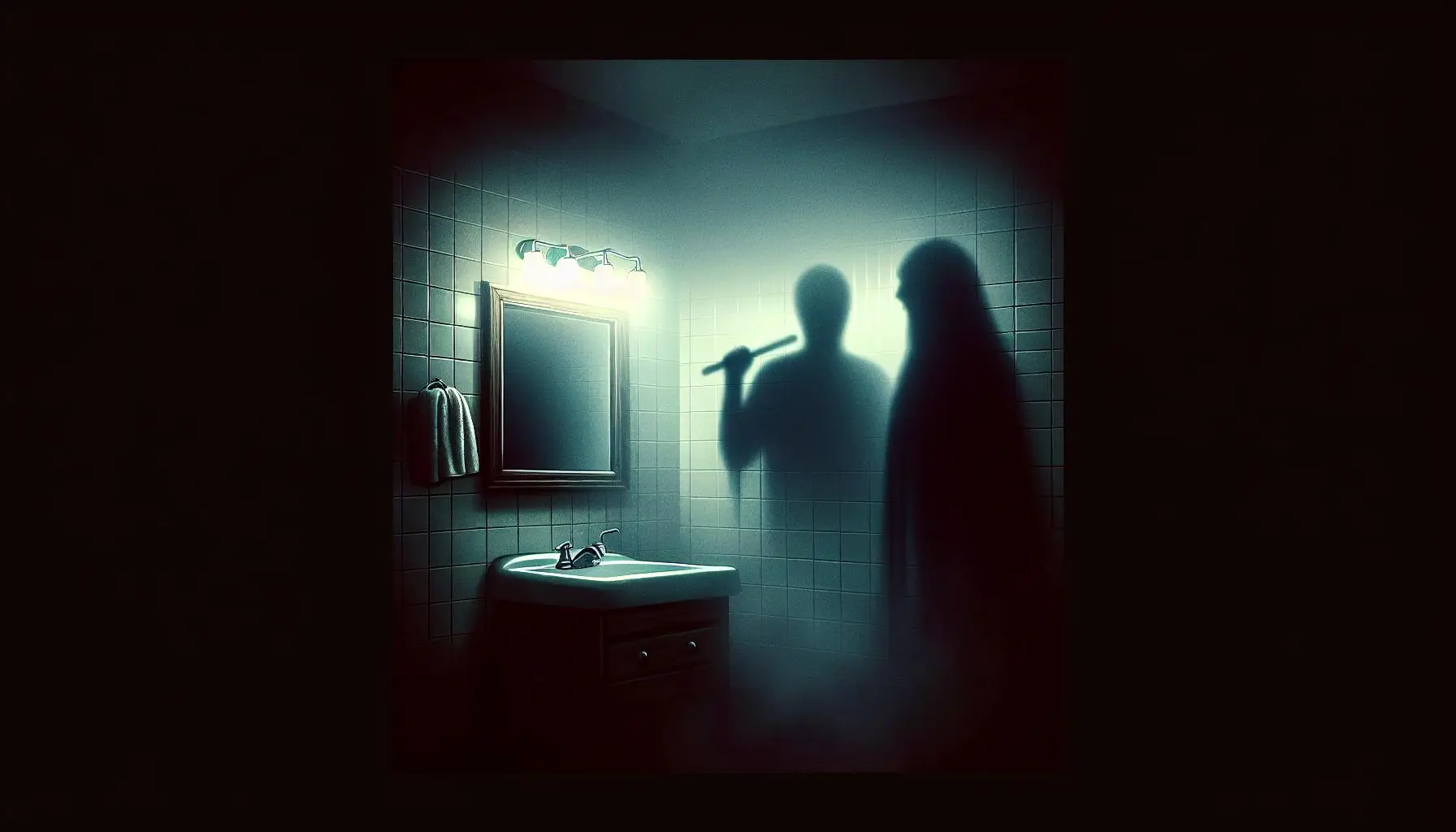The legend of Bloody Mary has captivated and terrified people for generations. Imagine standing in a dimly lit bathroom, staring into a mirror, and chanting her name 13 times. The anticipation builds with each repetition, and the fear of encountering a ghostly woman holding a dead baby or scratching at the glass is almost palpable.
But who is Bloody Mary really? Some say she’s Queen Mary I of England, whose persecution of Protestants earned her the infamous title. Others believe she’s a sorrowful spirit mourning her lost children after numerous miscarriages. And then there’s the tale of Mary Worth, a witch executed for practicing black magic. Each version of the legend adds a layer of mystery and horror, making Bloody Mary a figure of endless fascination and debate.
Origins of the Bloody Mary Legend
The Bloody Mary legend has captivated many, blending history and folklore into a terrifying narrative.
Historical Figures Connected to the Tale
Several historical figures have been linked to the Bloody Mary legend. One prominent theory connects the legend to Queen Mary I of England. Known as Bloody Mary, she became infamous for her persecution of Protestants during her reign from 1553 to 1558. Historical records indicate she ordered the execution of around 280 Protestants, often through brutal methods such as burning at the stake. This bloodshed contributes to her association with the ghostly figure of Bloody Mary.
Another figure often mentioned is Mary Worth. Believed to be a witch from American folklore, Mary Worth supposedly practiced black magic more than 100 years ago. Legends describe her as haunting those who summon her by chanting “Bloody Mary” multiple times in front of a mirror.
Cultural Variations and Similar Legends
The Bloody Mary legend has numerous cultural variations. Across the English-speaking world, the common ritual involves chanting her name in a dimly lit room. However, details differ; in some versions, she appears alone, while in others, she’s holding a dead baby. Sometimes she merely stares, but occasionally, she attacks.
Similar legends exist in other cultures. For instance, Japan has the legend of Hanako-san, a spirit believed to haunt school bathrooms. Other cultures have their own mirror-related rituals, adding a global dimension to the phenomenon of summoning spirits.
The Ritual and Its Variations
The legend of Bloody Mary has captivated many through the ritual performed to summon her. This section delves into how to carry out this ritual and the common experiences reported by those who have attempted it.
How to Summon Bloody Mary
To summon Bloody Mary, follow these steps:
- Enter a dimly lit or candle-lit room: Typically, a bathroom is used, and the lighting is kept low to create an eerie atmosphere.
- Chant Bloody Mary’s name: Repeatedly chant “Bloody Mary” a specified number of times, usually three, ten, or thirteen.
These steps often serve as a rite of passage, particularly among young girls. The dim lighting and chanting aim to create the right psychological conditions to evoke the apparition.
Common Experiences Reported
Participants often report a range of experiences after performing the ritual:
- Visual phenomena: Some see a ghostly figure in the mirror, described as a corpse, witch, or spirit. This apparition sometimes appears covered in blood.
- Emotional reactions: Witnessing Bloody Mary can trigger intense fear or shock. Screams and curses are commonly described.
- Physical sensations: More extreme accounts include sensations like strangulation, soul-stealing, or scratching of the eyes.
The legend even includes variations where Bloody Mary is summoned by different names like “Hell Mary” or “Mary Worth.” Despite these variations, the core elements of the ritual remain consistent, continuing to fuel its chilling allure.
Psychological and Paranormal Explanations

Psychological and paranormal explanations add depth to the legend of Bloody Mary, blending science with folklore.
Psychological Explanations
- Pre-pubescent Anxiety: The Bloody Mary ritual mirrors pre-pubescent anxiety. Folklorist Simon J. Bronner notes it reflects the fears of adolescence, especially among young girls. Performed at sleepovers, the ritual provides a way to cope with growing uncertainties.
- Social Fears and Insecurities: Urban legends like Bloody Mary prey on social fears and insecurities. Concerns about being kidnapped, murdered, or stalked are heightened through word-of-mouth, making these legends more believable and persistent in culture.
The Science Behind Mirror Illusions
Mirror illusions, linked to the Bloody Mary legend, have psychological explanations. The “strange-face-in-the-mirror” illusion occurs when staring at a mirror in low light for an extended period. Researchers from Urbino University, Italy, observed that this illusion can cause individuals to perceive deformed features or ghostly apparitions. The brain’s role in these distortions involves a mix of sensory adaptation and dissociative identity effects, producing eerie visuals.
Paranormal Theories and Beliefs
Paranormal theories attribute Bloody Mary sightings to supernatural causes. According to these beliefs, chanting Bloody Mary’s name summons her vengeful spirit, which appears in mirrors. The concept of mirrors as portals to the spirit world supports these theories. Many cultures regard mirrors as gateways, connecting the physical and spiritual realms.
Scientific explanations aside, the paranormal perspective persists. Stories of ghostly encounters and inexplicable phenomena continue to fuel the legend of Bloody Mary, blending psychological, cultural, and supernatural elements in a deeply rooted urban myth.
Impact and Influence on Popular Culture

The legend of Bloody Mary has left an indelible mark on popular culture, influencing media, entertainment, and modern urban legends.
Appearances in Media and Entertainment
Bloody Mary appears in various movies, TV shows, and video games. The 1992 film “Candyman” reimagines the legend with a sinister twist. TV shows like “The X-Files,” “Charmed,” and “Supernatural” have episodes featuring the legend, reflecting its ongoing appeal. In gaming, Bloody Mary also inspires characters and plotlines, cementing her place in diverse entertainment forms.
Influence on Modern Urban Legends
The Bloody Mary legend shapes modern urban legends by evolving from older mirror divination rituals. Cognitive anthropologists explain its psychological appeal through its balance of intuitive and counterintuitive elements. This mix makes the story memorable and engaging, influencing contemporary folklore and similar supernatural tales. This influence extends globally, showing the legend’s resilience and adaptability in various cultural contexts.
Bloody Mary’s persistent presence in popular culture showcases its ability to adapt and remain relevant across different media and generations, highlighting its significant impact on modern storytelling and urban myths.
Conclusion
The legend of Bloody Mary continues to captivate and terrify generations. Its blend of psychological, cultural, and supernatural elements makes it a powerful urban myth that transcends time and geography. Whether viewed as a reflection of societal fears or simply a spooky tale, Bloody Mary remains an enduring figure in our collective imagination. The legend’s influence on popular culture and its ability to evolve with modern storytelling ensures it will remain a staple in the realm of urban legends for years to come.
Steve is the creative force behind My Unique Tales, a blog dedicated to sharing captivating stories that explore the human experience in all its complexity. With a passion for writing and a talent for crafting engaging narratives, Steve's blog is a treasure trove of imaginative tales that transport readers to other worlds and challenge them to see things from new perspectives. From epic adventures to intimate character studies, Steve's stories are always thought-provoking and emotionally resonant. With a growing following of readers who appreciate his unique voice and creative vision, Steve is quickly becoming a rising star in the world of online storytelling.






